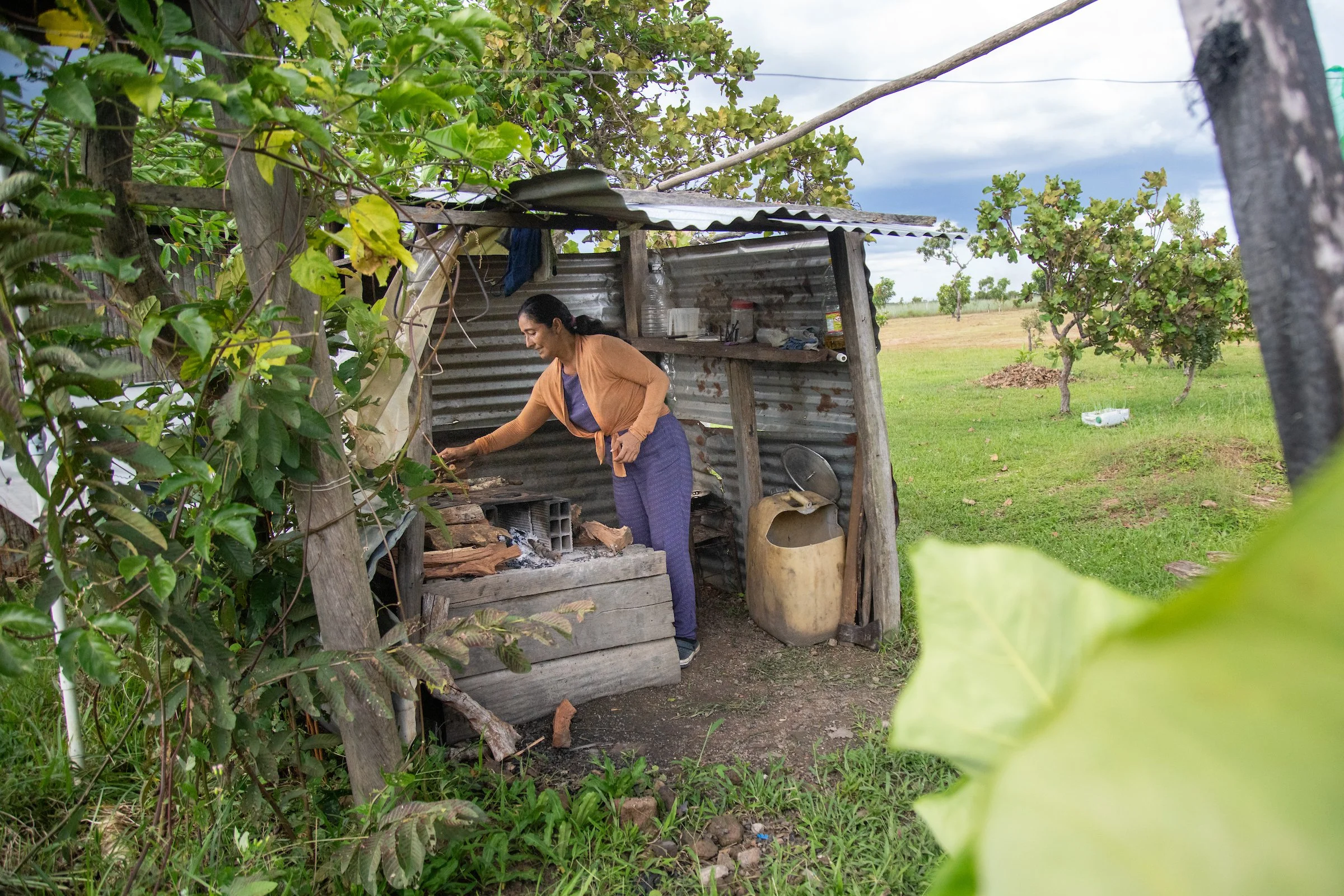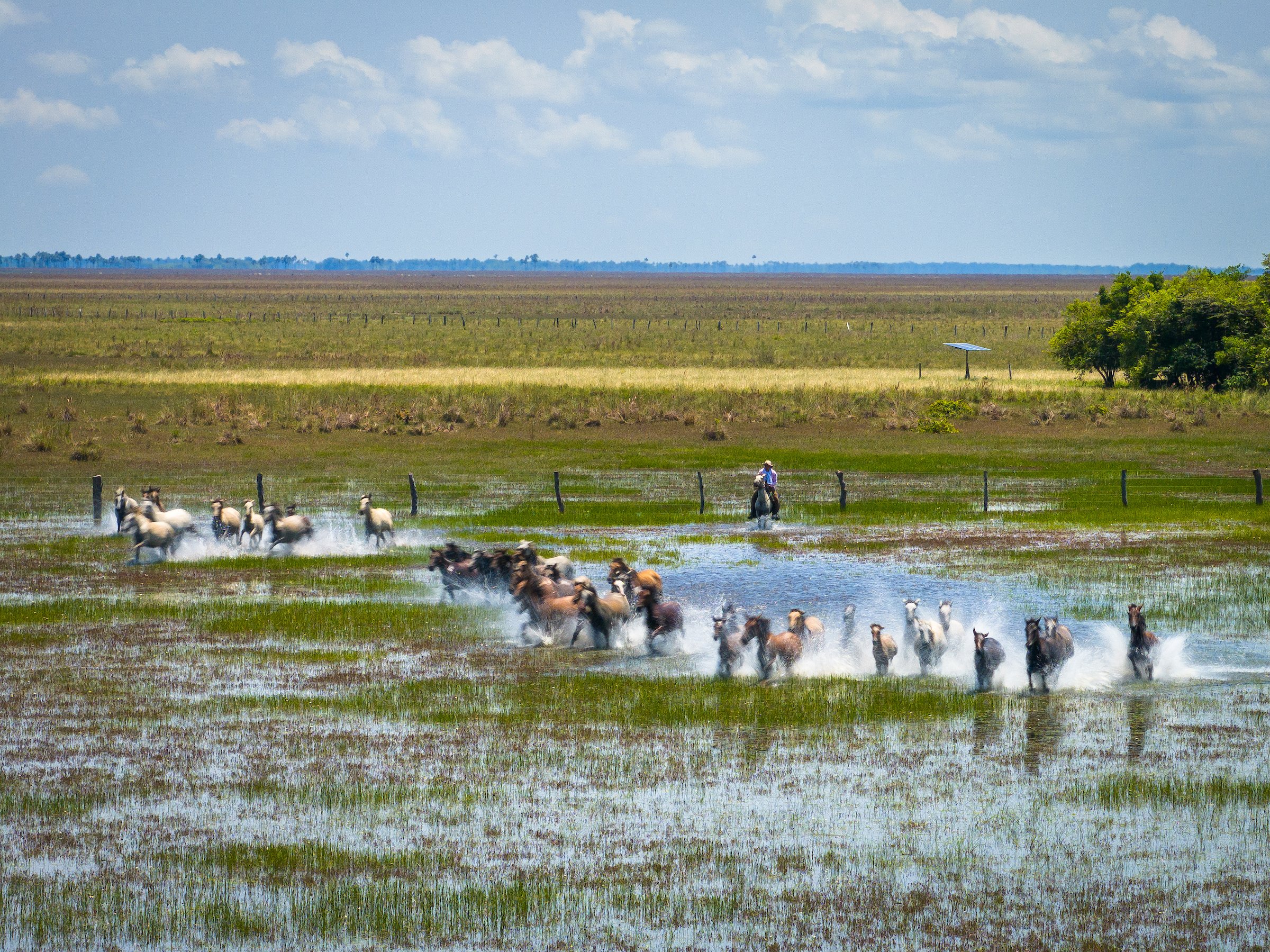Agua, Tierra, Cultura, Sabana
Water, Land, Culture, Savannah.
A video and photographic series to preserve 'South America’s Serengeti.'
Hato Corozal, Colombia.
Watch the video series in Spanish HERE.
The Orinoco River basin covers a fifth of Colombia’s territory. It is surrounded by immense savannahs and tropical forests that are home to more than 3,900 species of plants and animals, including capybaras, caimans, giant anteaters, and macaws.
Unfortunately, this fascinating region, which has been nicknamed the Serengeti of South America, has also been developed in a disorderly way, with oil companies, palm plantations, settlers, and wildcat miners threatening its ecosystems and polluting local sources of water.
The World Wildlife Fund has been working in the Orinoco region for more than a decade to set up private nature reserves and help local farmers, fishermen, and cattle ranchers live more sustainably off the land.
Recently, the Fund hired WhereNext to produce four mini-documentary films about local people who have made massive efforts to preserve the Orinoco’s plains and live in harmony with nature.
“These are stories from remote places, where people are implementing sustainable forms of living despite facing many difficulties,” said Santiago Ospina, the director of the four-part series, which is now on YouTube.
“Through these stories, we want to motivate more people in the Orinoco to join conservation efforts and encourage people in other parts of the world to consider how they can help preserve the ecosystems around them.”
Amanda Barreto, cashew producer. Bita River.
Tropical Screech-Owl
Yanire (above) and Libia Arismendi, two sisters who resisted offers by Colombia’s oil industry to drill on their family’s ranch in Casanare province and have instead turned their property into a sustainable farming and nature reserve.
One of the videos features the story of Libia and Yanire Arismendi, two sisters who resisted offers by Colombia’s oil industry to drill on their family’s ranch in Casanare province and have instead turned their property into a sustainable farming and nature reserve.
Another video follows veterinarian and cattle rancher Francisco Sandoval. He explains how he grows his food without chemicals and has learned to “interpret nature” by rearing his cows in the savannah without destroying nearby forests.
WhereNext’s team also visited the remote Vichada province, along Colombia’s eastern border with Venezuela, to document the story of a fisherman who protects local riverbeds by planting trees and helps sustain populations of ornamental fish species in high demand worldwide.
We also filmed the story of a couple that set up an organic cashew farm in Vichada with WWF's help while preserving forests that are home to deer and tapirs.
These stories are part of the communications component of the Orinoquia Integrated Sustainable Landscapes initiative, a multimillion-dollar project funded by the Global Environment Facility and implemented by WWF.
The project has helped local farmers and cattle ranchers establish and manage nature reserves in the Orinoco region, where there are currently more than 130 privately owned reserves that cover 138,000 hectares, an area twice the size of New York City.
“These are stories from remote places, where people are implementing sustainable forms of living despite facing many difficulties.”
The videos will also be shown by the Regional System of Protected Areas (SIRAP), a group that holds regular meetings that bring together farmers, scientists, park rangers, and others interested in the Orinoco’s sustainable development.
“The idea of these videos is to go beyond the numbers and technical documents and show, in a more emotional way, the impact that these initiatives have on people's lives,” said Carolina Muñoz, WhereNext’s project manager.
She explained that the agency—which started out by making videos for cycling companies and outdoor clothing brands—is increasingly working on video campaigns that promote sustainable development programs.
Francisco 'Pacho' Sandoval. Rancher and veterinarian from Casanare who committed his property to conservation.
El Hato Corozal.
Another series of videos for Destination Nature, a USAID-funded effort to promote ecotourism in areas of Colombia that are emerging from decades of violence, is currently in the making.
For that project, WhereNext crews have already visited rainforests and archeological sites in the provinces of Guaviare, Putumayo, and Cauca, where locals are transitioning from working in extractive industries to a sustainable tourism economy.
Muñoz said that some of the videos from these places will be part of a campaign to attract more tourists to these sites, in which a local airline company is also participating.
WhereNext is also working on a series of seven videos for Swiss Contact that highlight the impact that the organization’s technical assistance projects are having on the lives of farmers in Colombia.
“These videos help reach the general public in a more friendly way,” Muñoz said. “But they also help you show the stakeholders who finance these projects what is being done with their investment and help attract additional support from policymakers and potential donors.”
Hato Corozal, Colombia.
Sunrise over the undulating savanna near the Bita River.








